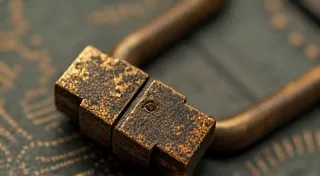Silent Consent: Ethics and the Privilege of Circumvention
The click. A small, unassuming sound, yet it represents a threshold. A boundary between access and restriction. For those drawn to the quiet artistry of lock picking, that click isn't a victory of intrusion, but a subtle acknowledgement of a principle: the temporary and revocable nature of control. It's a practice that demands not just skill, but a deeply considered understanding of its ethical implications. It’s a world where respecting boundaries is as essential as mastering the tools.
My fascination with circumventing mechanisms began, surprisingly, with accordions. Not just playing them, although I did that, but understanding them. The complex interplay of bellows, reeds, and keys is a marvel of engineering. The older ones, particularly those from the early 20th century, are more than instruments; they are intricate clockwork sculptures, testaments to a craftsman’s dedication. Restoring one is a delicate dance of knowledge and intuition – tracing the original intent of the maker, patiently reassembling damaged components, and bringing a piece of history back to breath. Disassembling a faulty valve, for example, requires a respect for its original purpose and a subtle manipulation, not unlike the approach one takes with a lock.

There's a profound beauty in understanding how things work, in tracing the logic behind their construction. The accordion’s inner workings aren’t a secret to be exploited, but a puzzle to be appreciated. That same curiosity, that desire to grasp the underlying mechanisms, led me to lock picking. It wasn't about breaking into anything; it was about understanding the principles of security, about appreciating the ingenuity – and, sometimes, the vulnerabilities – of mechanical devices. The initial draw isn't malice; it’s a genuine desire to *know*.
The Grey Areas of Circumvention
But that desire to know walks a very fine line. Circumvention, by its very nature, implies a breach of an established rule or agreement. When that agreement involves security – a lock securing a door, a password protecting data – the ethical considerations become significantly more complex. The privilege of circumventing security, whether it's a mechanical lock or a digital firewall, isn’t an inherent right; it's a conditional one, dependent on consent or a compelling justification.
Think of it like this: a museum conservator understands how to unlock and dismantle a valuable antique clock to repair it. They possess the skill, but the key is their permission – the museum's explicit consent. Their action is justified by a higher purpose: preservation. Without that consent, their actions would be a blatant violation of trust and legality. Lock picking, when practiced responsibly, can be analogous. It’s about understanding the mechanisms, not exploiting them.
The Principle of Silent Consent
The concept of “silent consent” is key here. It's not about literal permission – which is rarely given – but about a reasonable assumption that a system’s vulnerabilities *could* be explored if done responsibly and without malicious intent. A homeowner might leave a window unlocked, not through negligence, but with the understanding that a child might inadvertently need access. It’s a silent acknowledgement that a degree of accessibility is necessary. Similarly, a locksmith, tasked with opening a forgotten lock, operates with a tacit understanding of the situation.
This isn't to suggest that any action is permissible simply because it *could* be justified. The crucial element is the *potential* for harm. If circumventing a lock poses a risk of theft, property damage, or violation of privacy, then the ethical justification collapses. The act becomes a transgression, regardless of the skill involved. The inherent respect for the system's integrity must outweigh the curiosity.
The ethical framework hinges on a few core principles: No harm – any actions taken must not cause damage or distress. Respect for privacy – the purpose must be demonstrably benign and avoid any intrusion into personal information or space. Transparency & Disclosure (where possible) – While often impractical in scenarios involving locks, the underlying philosophy should promote openness and honesty.
The Craftsman’s Code: Understanding and Responsibility
The tools of lock picking – picks, tension wrenches, shims – are instruments of precision, demanding a level of dexterity and control that elevates the practice beyond mere manipulation. They are extensions of the hand, allowing for subtle probing and manipulation. Just as a surgeon needs to understand anatomy, a lock picker needs to understand the workings of a pin tumbler lock, a wafer lock, or a combination lock. This understanding fosters a profound respect for the craftsmanship involved, and a heightened awareness of the potential consequences of misuse.

There’s a parallel here with other traditionally skilled crafts. A skilled woodworker understands the grain of the wood, the properties of different types of saws, and the nuances of joinery. They don’t exploit this knowledge to vandalize furniture; they use it to create beautiful and functional objects. Similarly, a lock picker should approach their craft with a sense of responsibility and a commitment to ethical practice.
Beyond the Click: The Value of Education
Ultimately, the purpose of exploring lock picking shouldn’t be about circumventing security for personal gain. It should be about education – about understanding the principles of security, about appreciating the ingenuity of mechanical devices, and about fostering a deeper awareness of the ethical implications of technology. It's about the journey of discovery, not the destination of intrusion.
The click itself isn’t a symbol of triumph; it's a reminder of the delicate balance between knowledge and responsibility. It's a testament to the fact that understanding a system doesn’t automatically grant the right to manipulate it. It underscores the importance of silent consent, the privilege of circumvention, and the craftsman’s code that demands respect for privacy and a commitment to ethical practice.
The world is full of complex mechanisms, both physical and digital. Understanding how they work is a fascinating and rewarding pursuit, but it must always be tempered with a deep sense of responsibility. The click should be accompanied by a quiet affirmation: a promise to use this knowledge for good, to educate others, and to uphold the principles of ethical circumvention.






